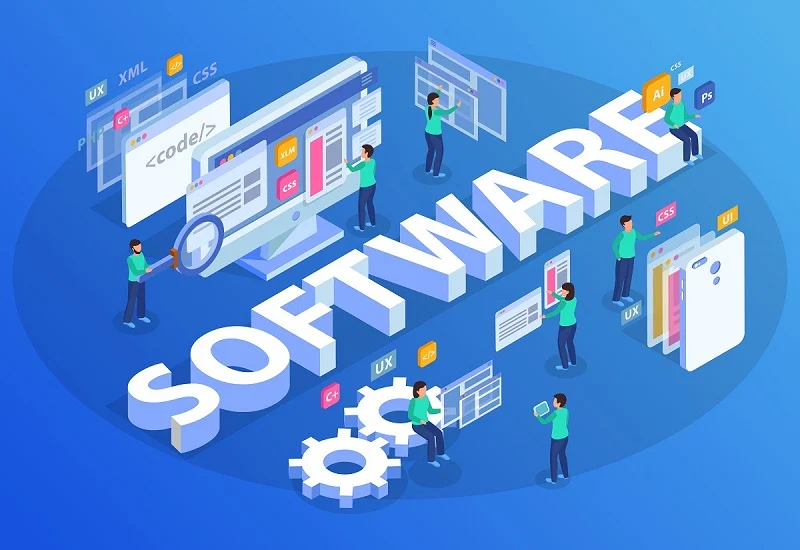In today’s fast-paced tech landscape, delivering high-performing software is no longer optional. Whether it’s a complex enterprise platform or a lightweight web application, performance plays a critical role in user satisfaction, scalability, and business success.
At One Technology Services, we have seen how small, strategic optimizations can make a significant impact. This guide will walk you through proven performance optimization tips that enhance software development outcomes without sacrificing stability or maintainability.

1. Start with Clear Performance Goals
One of the biggest mistakes in software development is assuming performance will happen naturally. It won’t.
Key Actions:
- Define performance KPIs (e.g., response time under 200ms, memory usage under 500MB)
- Set realistic load targets (users per second, transactions per minute)
- Monitor early and continuously, not just at launch
Establishing these targets upfront helps development teams prioritize tasks and validate performance throughout the development lifecycle.
2. Profile Before You Optimize
It’s tempting to start rewriting code when an app feels slow, but guessing rarely helps. Profiling identifies the real bottlenecks.
Use Tools Like:
- Chrome DevTools for frontend
- VisualVM or YourKit for Java
- dotTrace for C#
- Py-Spy for Python
Profilers show what functions consume the most CPU or memory. This prevents wasted time optimizing components that are already performing well.
3. Optimize Data Access Patterns
Slow I/O operations, especially database calls, are a major source of performance issues.
Tips to Improve Data Handling:
- Avoid N+1 queries. Use eager loading or proper joins
- Use indexed fields for queries
- Cache frequent reads using Redis or Memcached
- Batch database writes
Many backend bottlenecks can be resolved with better SQL practices and smarter data architecture.

4. Use Asynchronous Processing
Blocking operations like file uploads, API calls, or background tasks should not freeze the user experience.
Implementation Ideas:
- Queue background jobs using tools like Celery, Sidekiq, or RabbitMQ
- Use non-blocking frameworks such as Node.js or async Python
- Run time-consuming logic outside the main thread
Asynchronous design patterns significantly improve throughput without requiring more infrastructure.
5. Improve Frontend Performance
Poor frontend performance can degrade the user experience even if the backend is fully optimized.
Frontend Optimization Checklist:
- Minify and bundle CSS and JavaScript files
- Compress images using next-gen formats like WebP
- Use lazy loading for offscreen images
- Defer non-critical scripts
- Set appropriate cache-control headers
Modern build tools like Webpack or Vite can help automate many of these practices.
6. Reduce External Dependencies
Third-party libraries and services often introduce unnecessary overhead.
Tips:
- Audit and remove unused packages
- Self-host frequently used libraries
- Avoid using a full library for a single function
Keeping dependencies lean improves load time, performance, and security.
7. Monitor and Benchmark Regularly
Performance optimization is an ongoing process, not a one-time task.
Monitoring Tools:
- New Relic
- Datadog
- Prometheus with Grafana
- Google Lighthouse for web apps
Use both synthetic and real-user monitoring to track performance trends and catch regressions.
8. Write Efficient Code
Efficient code is the foundation of high-performing systems. Focus on writing logically sound, clean, and efficient code from the start.
Developer Tips:
- Prefer algorithms with better time complexity
- Avoid deeply nested loops and excessive DOM operations
- Reuse objects and arrays instead of recreating them
Prioritize clarity and maintainability while aiming for good performance.
9. Use Load Testing Early
Waiting until pre-launch to perform load testing often leads to surprises. Start early and test often.
Tools to Try:
- JMeter
- k6
- Locust
- Artillery
Simulate real-world load to understand how the system behaves under pressure and uncover potential issues before users encounter them.
10. Leverage CDN and Caching Strategies
For web applications, performance often depends on proximity and cache efficiency.
Optimization Tactics:
- Use a CDN such as Cloudflare or AWS CloudFront to serve static assets
- Implement browser caching
- Use ETags and cache headers appropriately
- Consider edge computing for frequently accessed content
These strategies reduce load on origin servers and improve speed for global users.
11. Optimize Build and Deployment Pipelines
A high-performance app means little if your build pipeline is slow or causes downtime during deployment.
CI/CD Tips:
- Use build caching to speed up compilation
- Deploy with blue-green or canary strategies
- Include performance checks in CI pipelines
Faster pipelines improve feedback loops and overall development efficiency.
12. Prioritize Mobile Optimization
Users accessing your app from mobile devices expect fast and responsive experiences.
Mobile Optimization Tips:
- Limit initial payload size to under 150KB
- Use adaptive loading based on network speed
- Test with 3G throttling in Chrome DevTools
- Avoid blocking main threads with large JavaScript bundles
Optimizing for mobile devices also improves search rankings and accessibility.
13. Refactor With Purpose
Refactoring helps improve performance and maintainability, but it should be based on real data.
When to Refactor:
- Recurring bottlenecks appear in the same code area
- Current implementation limits scalability
- Developers consistently face difficulties modifying the code
Purposeful refactoring enhances system stability and development speed.
14. Educate the Team on Performance Best Practices
Performance should be a shared responsibility across the development team.
Tips:
- Host regular knowledge-sharing sessions
- Include performance in code reviews
- Document best practices in team wikis
One Technology Services recommends appointing performance champions to help reinforce consistent practices across teams.
15. Focus on Real-World Performance
Benchmarking in isolated environments is useful but should not replace real-world measurement.
How to Align with Reality:
- Use real user monitoring (RUM) tools
- Measure first input delay, time to interactive, and layout stability
- Monitor across different locations and device types
Focusing on real-world performance improves actual user experience and retention.
Conclusion
Performance is a competitive advantage. Whether you are optimizing backend logic, frontend assets, or your deployment process, each step helps create a faster and more reliable software product.
At One Technology Services, we believe that performance should be a priority from day one. With the right tools, practices, and mindset, development teams can deliver scalable, efficient software that meets business goals and exceeds user expectations.
Need expert advice to optimize your software performance?
Contact One Technology Services today to learn how our development experts can improve the speed, scalability, and efficiency of your next project.
Read More:

